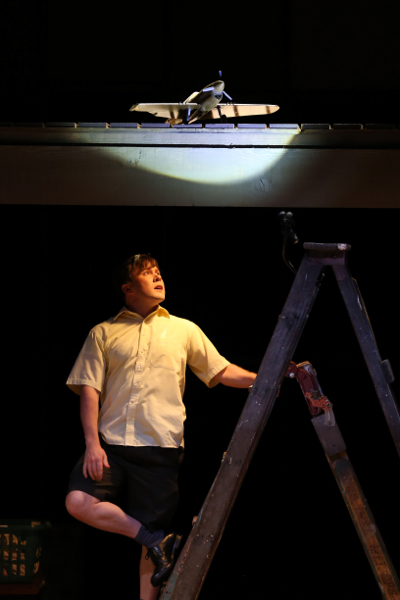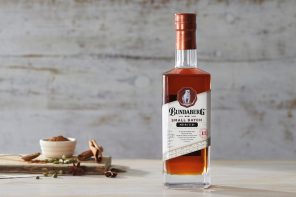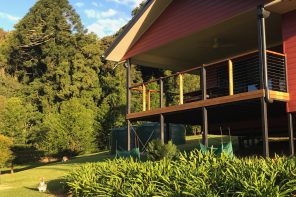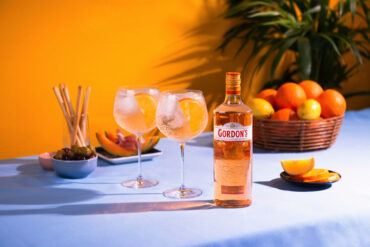Published in The Canberra Times Panorama section, April 19, 2003.
There’s great excitement out Charleville way this Easter. The south-west Queensland town, about 800km from Brisbane, is home to a breeding program for the endangered bilby, the cute little marsupial that is beginning to replace the traditional Easter bunny in some Australian celebrations.
This Easter the first of the bilbies bred in captivity will be released into the wild. To help the four males and 36 females on their way, a 25 sq km area inCurrawinyaNational Parkhas been fenced to keep out predators, funded by a remarkably successful public campaign.
The bilby is a member of the bandicoot family and whereas it was once common in about 70 per cent of mainland Australia, its numbers declined suddenly in the early 1900s because of competition for food with rabbits and livestock, and because of predators such as foxes and feral cats.
Its numbers inQueenslandare now thought to be as low as 600, spread over about 100,000 square kilometres. During the past 13 years, the Queensland Government has spent more than $2 million to ensure the bilby’s continued existence, including research, buying land and establishing the breeding program at Charleville.
It is timely that the animal’s release into the wild should be taking place at Easter because it is Easter that has turned the bilby into an icon for endangered animals. Another Australian icon, chocolate company Darrell Lea, has been instrumental in the success of the Save the Bilby Fund, not only in raising awareness but also in raising funds through the sale of its chocolate bilbies.
Since the fund was launched in March 1999, the Wildlife Preservation Society of Queensland has raised around $350,000 to pay for the Currawinya fence. Testament to the bilby’s appeal, young volunteers from Japan, Denmark, Germany and France rallied to help Australian volunteers build the fence. No doubt it helps that the bilby is a sweet little thing, with very soft blue-grey fur, white belly, long pink hairless snout and distinctive black tail with white crest at the end.
Visitors can stroll through the grounds of the National Parks & Wildlife Centre in Charleville, where the bilbies and yellow footed rock wallabies are being bred. Not only can they learn all about the fight to save the animals, but for $20 they can buy their own little bit of Currawinya fence, taking home a certificate as proof.
Charleville tour operator Fabulous Outback Escapes includes the National Parks & Wildlife Centre on its itinerary, treating visitors to a close-up view of the otherwise nocturnal animal.
Volunteer carer Lois Wilson brings out Melissa, who she hand-reared after it was orphaned. It weighed just 70g when she got it and although Lois had cared for possums and joeys before, she had had no experience with bilbies. She asked what to feed it and was told “you’ll work out what to do”.
Melissa thrived under Lois’s care for two and a half months, before returning to the breeding program in March. “It was an absolute honour looking after her,” says Lois. “She’s very special.”
The owners of Fabulous Outback Escapes, Adrian and Dina Ovenden, are a glamorous-looking young couple who met inMelbourneand fell in love with Charleville around four years ago. When she is not listening,Adrian, whose father had looked for opals in the area, proudly tells his story of how he dragged Dina away fromMelbourne.
They have teamed up with tour operators in Longreach and Mount Isa to provide three-, six- and nine-day outback escapes, with travel in air-conditioned minibus and accommodation in comfortable motels, such as the Mulgoa Country Motor Inn with its tranquil gardens and classy restaurant.
The Ovendens tie in their tours with the arrival of the Westlander train from Brisbane, a 16-hour overnight journey with a dining car serving hearty country fare and the usual assortment of bush characters on board. It’s a nice way to arrive; very slow so that you are eased into the outback and so that you can get an appreciation for how far you have come.
With a population of 3500, Charleville is an attractive town with classic pubs, a local history museum, a couple of good cafes and some quirky stores such as Rude Judes Fishing Store which sells adult novelty items amongst the fishing gear, and a Music & Sound Centre which sells opals and Janome sewing machines. Golders is worth checking out for Akubra hats and boots, and if it’s time for a haircut, pop into Mandy’s Shearing Shack.
Unquestionably, the biggest drawcard for visitors is the Cosmos Centre, which officially opens on April 26 though it has been partially open for the past month. From the outside, it looks a like a spaceship; inside, its futuristic, high-tech exhibits are set against a backdrop of earthy blue, green and rust red.
Designed to challenge and entertain, the interactive displays in the $3 million centre take visitors on an astronomical journey through the ages and across various civilisations. Visitors learn of the role of astronomy in terrestrial navigation and Aboriginal cosmology, including how Aboriginals timed their journeys to water holes and food sources according to signals they read in the stars.
At night, the roof rolls back on the Skywatch Observatory and visitors can view the stars and planets through powerful telescopes. The region is said to have some of the clearest night skies in the Southern Hemisphere, with no light or industrial pollution, and a low horizon with no mountains blocking vision.
Manager Jane Morgan believes the Cosmos Centre will put Charleville on the map. “Previously, little country towns were toilet stops. People now want a high level of interpretation and that’s across all levels, from the seniors to the backpacker market.”
Fact file:
Getting there: QantasLink from Brisbane to Charleville or Queensland Rail’s Westlander train (phone +61-13 22 32).
Charleville Visitor Information Centre: +61 (7) 4654 3057
Charleville Cosmos Centre: +61 (7) 4654 3057 or www.cosmoscentre.com
Fabulous Outback Escapes: (07) 4654 1114 or www.fabulousescapes.com.au
© Christine Salins




